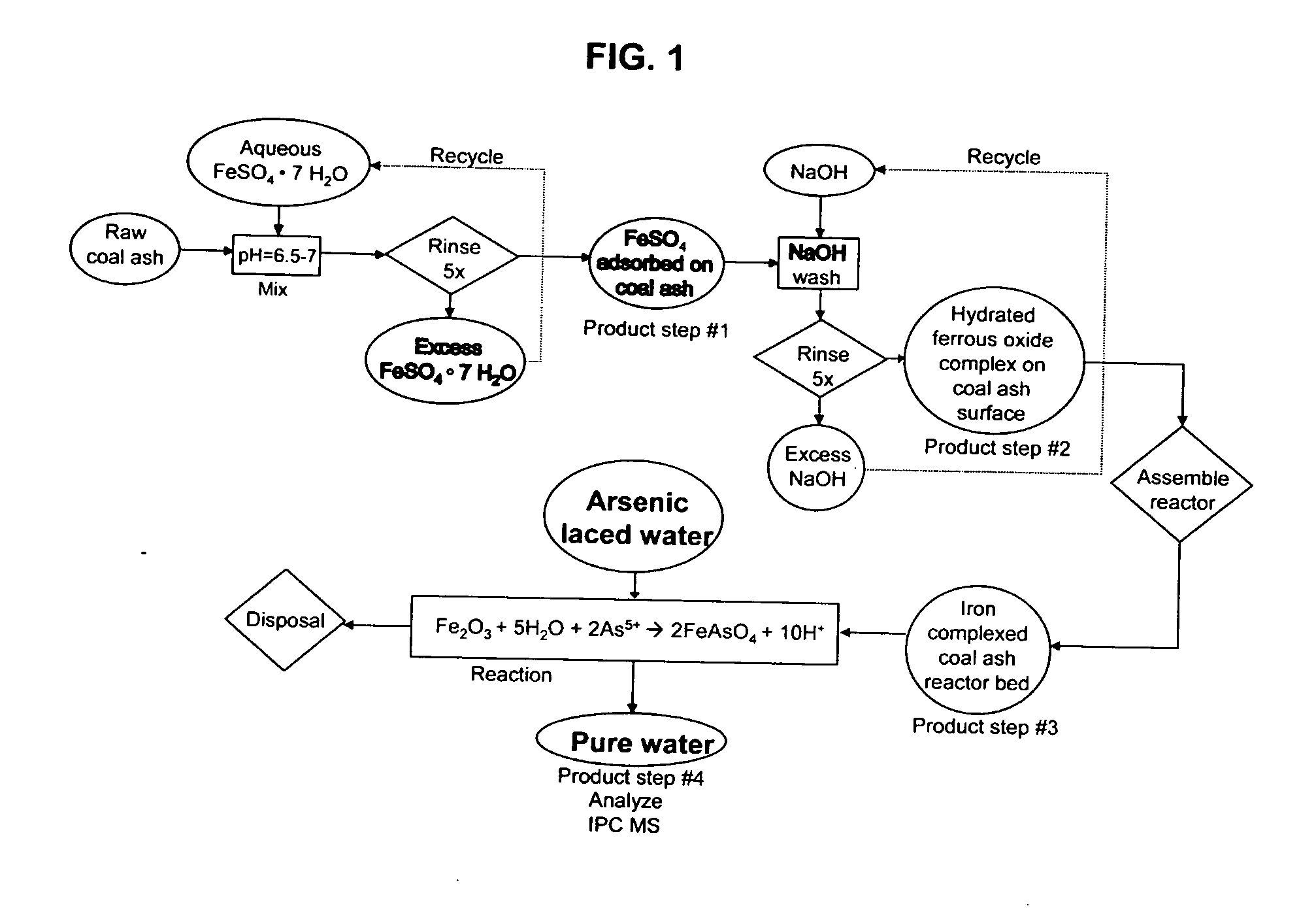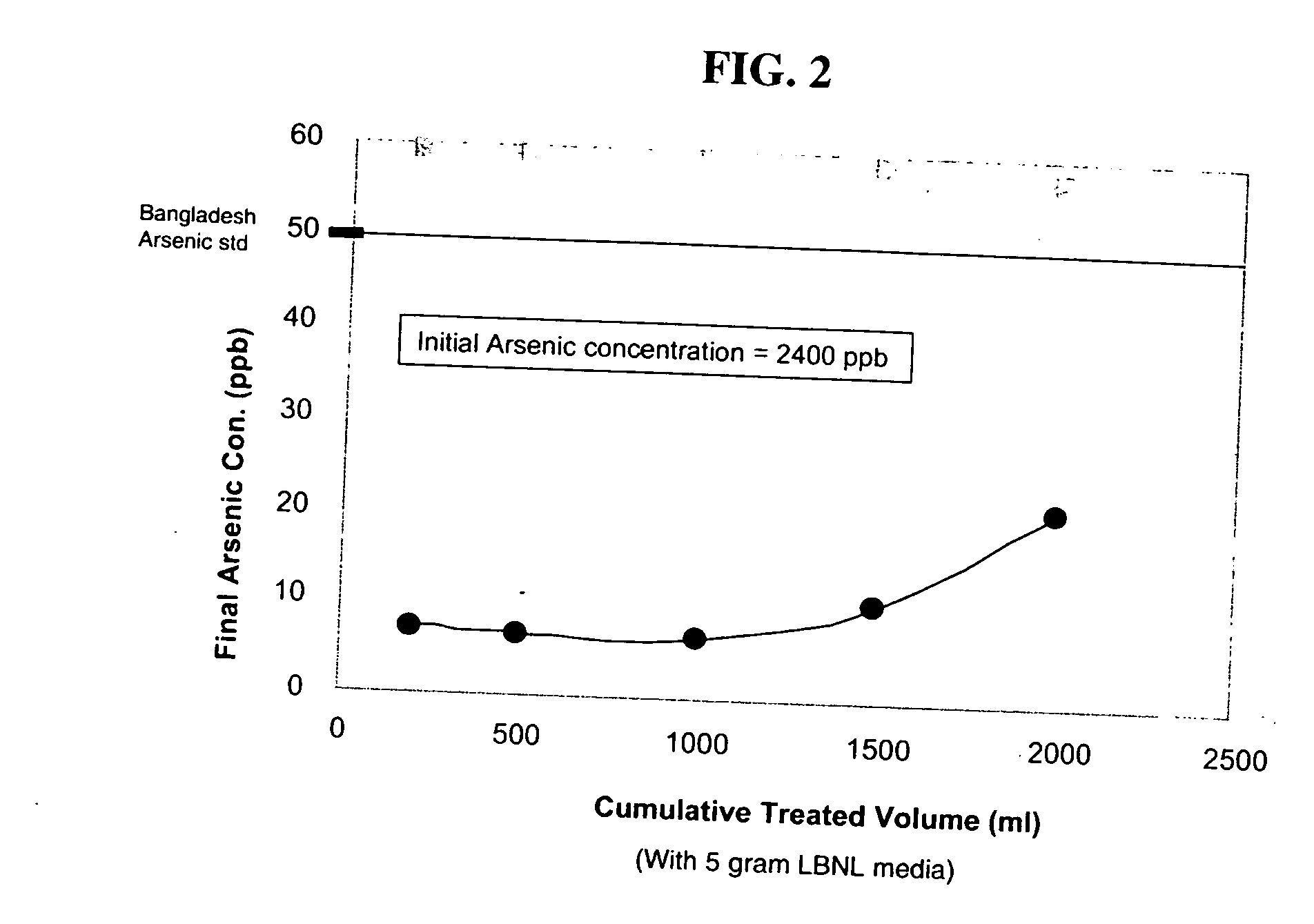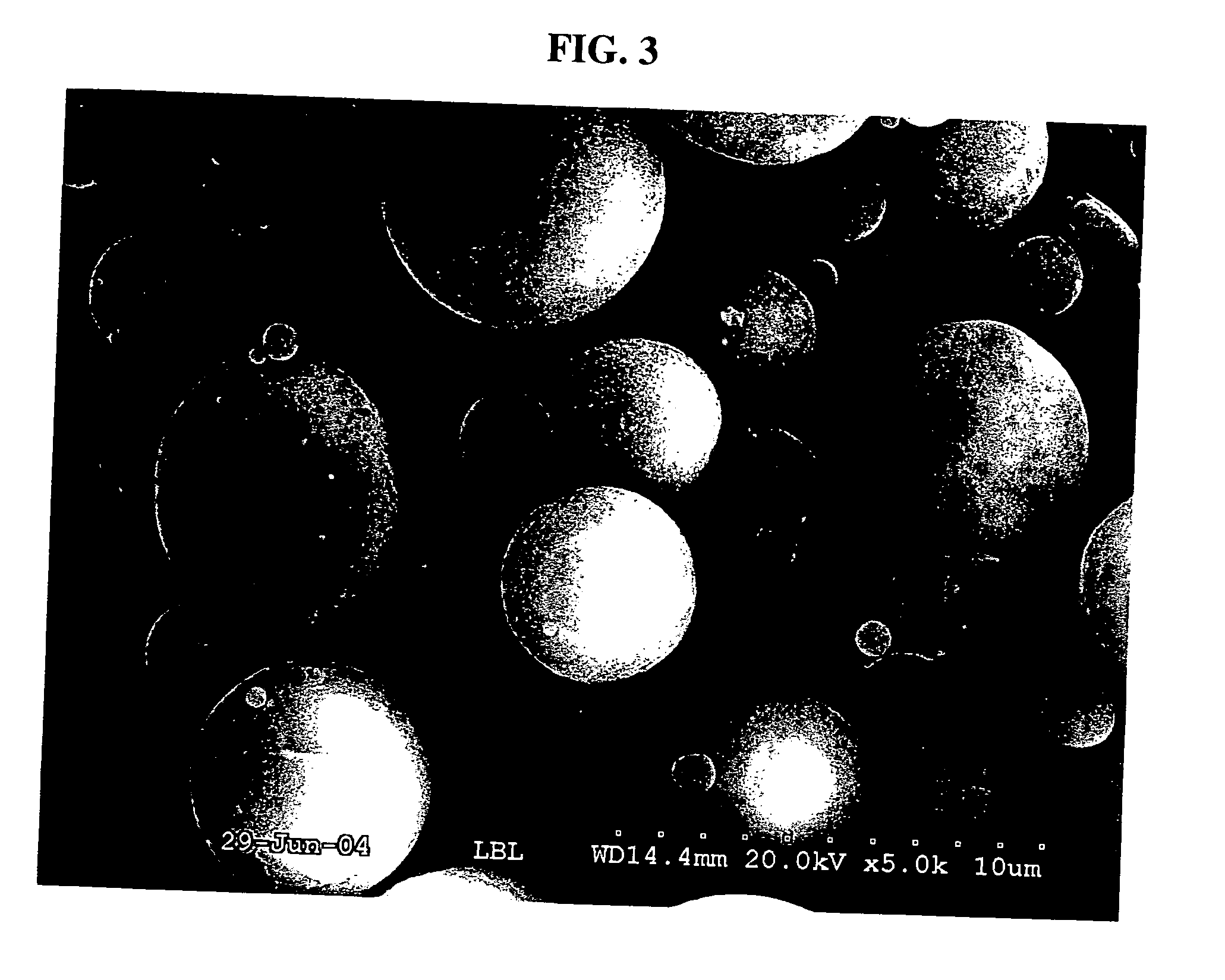Treated bottom ash medium and method of arsenic removal from drinking water
a technology of arsenic removal and bottom ash, which is applied in the direction of cellulosic plastic layered products, other chemical processes, natural mineral layered products, etc., can solve the problems of high cost of zeolites, inability to economically viable populations, and high cost of fly ash, and achieves the effect of easy adsorption and enhanced water input quantity of arsenic ions
- Summary
- Abstract
- Description
- Claims
- Application Information
AI Technical Summary
Benefits of technology
Problems solved by technology
Method used
Image
Examples
example 1
Preparation of 5 Grams of Pre-Treated Bottom Ash
[0021] Initially, 5 grams of dry bottom ash are placed in a holding container.
[0022] Approximately 30 ml of 0.6 Molar FeSO4 is mixed with the bottom ash, and continuously stirred for an hour at near room temperature, e.g. 10-40 degrees C. Although this is the room temperature saturation concentration of the FeSO4, lower concentrations could be used for either lower bottom ash surface coverage, or lower quantities of bottom ash. It is possible that FeSO4 concentrations could be usable from the range of 0.1 M or greater.
[0023] After stirring, the solid bottom ash particulate is allowed to settle to the bottom of the holding container for about 5 minutes. At this point, the surface liquid is removed, filtered, and the residue on the filter paper added to the dense mixture at the bottom of the holding container.
[0024] The holding container is then stirred with an aqueous solution of 9 ml of 0.5 N NaOH, and the contents mixed well for 5...
PUM
| Property | Measurement | Unit |
|---|---|---|
| Force | aaaaa | aaaaa |
| Color | aaaaa | aaaaa |
| Valence | aaaaa | aaaaa |
Abstract
Description
Claims
Application Information
 Login to View More
Login to View More - R&D
- Intellectual Property
- Life Sciences
- Materials
- Tech Scout
- Unparalleled Data Quality
- Higher Quality Content
- 60% Fewer Hallucinations
Browse by: Latest US Patents, China's latest patents, Technical Efficacy Thesaurus, Application Domain, Technology Topic, Popular Technical Reports.
© 2025 PatSnap. All rights reserved.Legal|Privacy policy|Modern Slavery Act Transparency Statement|Sitemap|About US| Contact US: help@patsnap.com



